A researcher who surveyed Nashik’s water-starved villages during this year’s tormenting summer reveals how the failure of PM Modi’s Jal Jeevan Yojana has had a debilitating effect on the women, who forced to shoulder responsibilities of fetching water from faraway hand pumps, are slowly falling ill
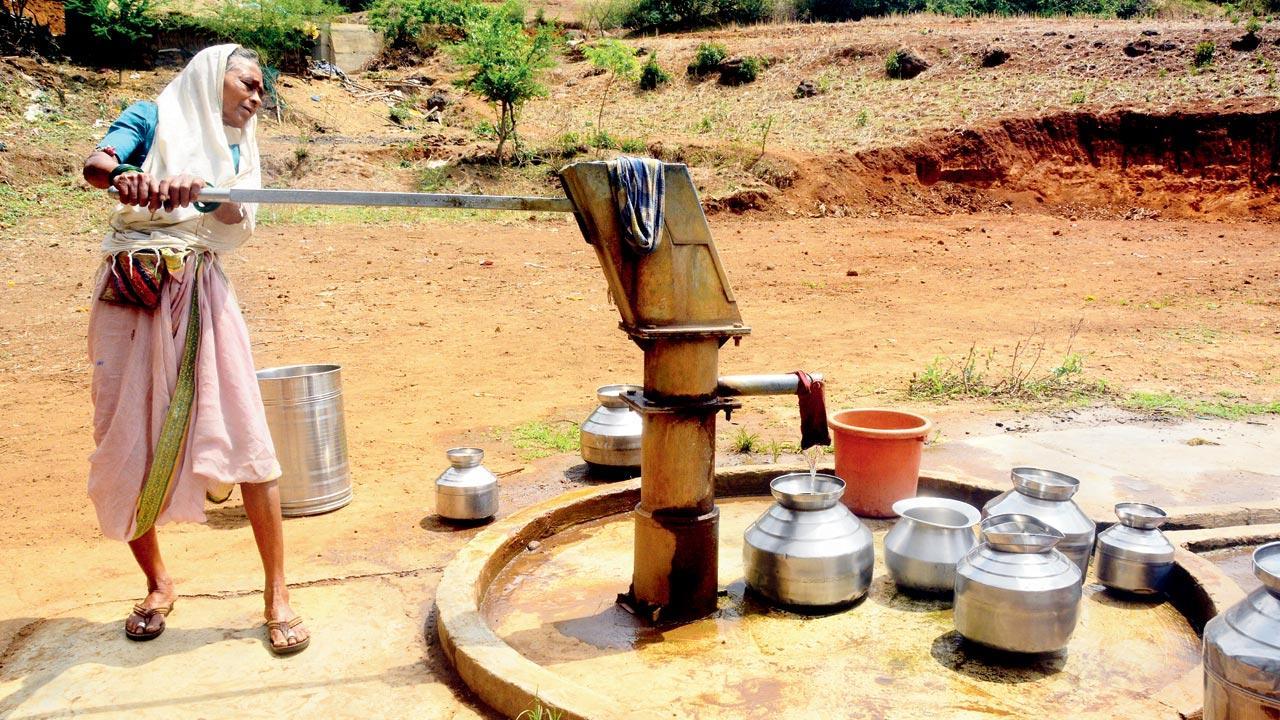
An elderly woman, Rupabai Pandu Dehade, from Pahine village in Trimbakeshwar taluka, uses a hand pump to fill water in a steel handi. Women say that drawing water from hand pumps can be exhausting. “It takes more physical labour. Pics/Satej Shinde
Bharti Aher treks nearly 5 km every day, carrying handis and cans loaded with 30 litres of water. For the 45-year-old, who hails from Dhumodi village in Trimbakeshwar taluka, where water dries out in its wells by April or March, this daily trudge to and fro a hand pump in a nearby village is excruciating. Collecting and carrying water are women’s responsibilities. “If we don’t do it, there will be no water to cook and clean at home,” she shares.
ADVERTISEMENT
The situation is the same in the neighbouring villages of Pahine, Brahmanwade and Amboli. “In all these years, the only change I have seen in my village are the taps, but they run dry in the summer.”
Women, both young and old, are forced to step out. An example being octogenarian Rupabai Pandu Dehade. The elderly woman can be seen lumbering her way to Pahine, with handis of water. “It’s becoming more and more difficult with age, but we have no choice.”
Forty eight-year-old Dhumodi village resident Chandrabhaga Khotre, says that drawing water from hand pumps can be exhausting. “It takes more physical labour; sometimes we queue up as early as 7 am at the spot. Our turn only comes four hours later.”
The travails of these women have been documented in a recent survey conducted in Trimbakeshwar taluka by writer-researcher Mayuri Dhumal, as part of a United Nations fellowship. According to Dhumal, women in the region carry an average weight of 22,000 kg of water on their heads and walk about 1,800 km every year.
PM Narendra Modi’s Jal Jeevan Mission had envisioned providing safe and adequate drinking water through individual household tap connections by 2024, with 55 litres of water supply per day. “But 58 per cent households in the region still don’t have a water tap,” says Dhumal, who through her survey wanted to understand how this puts a strain on women.
 Twenty-seven-year-old Chandrakala Korde, sarpanch of Brahmanwade, says despite being the head of the village, she, too, goes to fetch water from the neighbouring hand pump, as men in the household refrain from the task. Last year, she collapsed while walking home with the handis, and was bedridden for nearly eight days
Twenty-seven-year-old Chandrakala Korde, sarpanch of Brahmanwade, says despite being the head of the village, she, too, goes to fetch water from the neighbouring hand pump, as men in the household refrain from the task. Last year, she collapsed while walking home with the handis, and was bedridden for nearly eight days
A total of 100 women from the villages of Dhumodi, Hirdi, Brahmanwade, Pahine, Manipada, Loharpada, Hattipada, Devdongra, were interviewed between November 2022 and June 2023. “While the survey is still ongoing, findings from the interviews revealed how collecting water has impacted the lives and health of women.
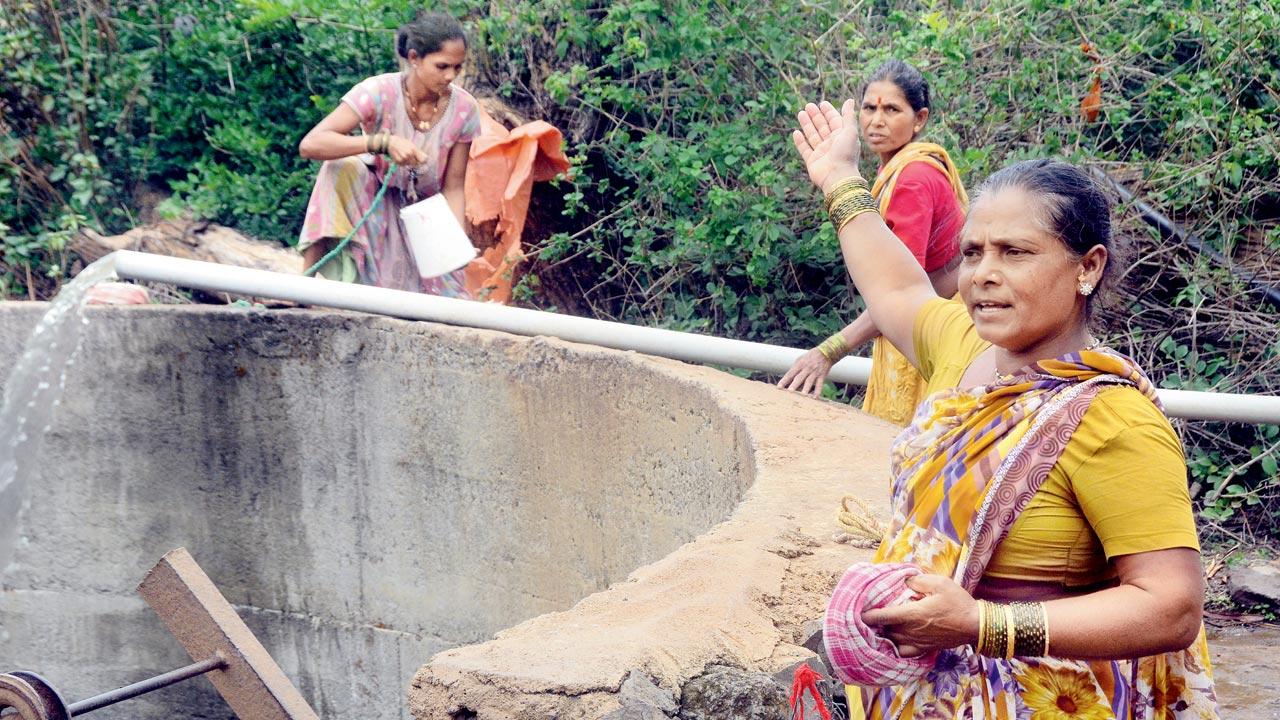 Bharti Aher treks nearly 5 km every day from Dhumodi to fill water at a nearby handpump. The average requirement in her home is 30 litres daily
Bharti Aher treks nearly 5 km every day from Dhumodi to fill water at a nearby handpump. The average requirement in her home is 30 litres daily
As per the survey, 40 per cent women surveyed fetch water themselves, 39 per cent said that their mother fetches water; 21 per cent stated that their sister was tasked with the job. Fifty four per cent of women described it as the “toughest task” of their day—going to work in the farms is a close second on the list. “Fifty nine per cent said they had water shortage in their village. They stated that they have to travel at least 2 km to get water,” she says, adding, “It takes 1.5 to 2 hours for them to fetch water. Sometimes, it takes more than two hours. It varies depending on how big the family is, and how much water they need.”
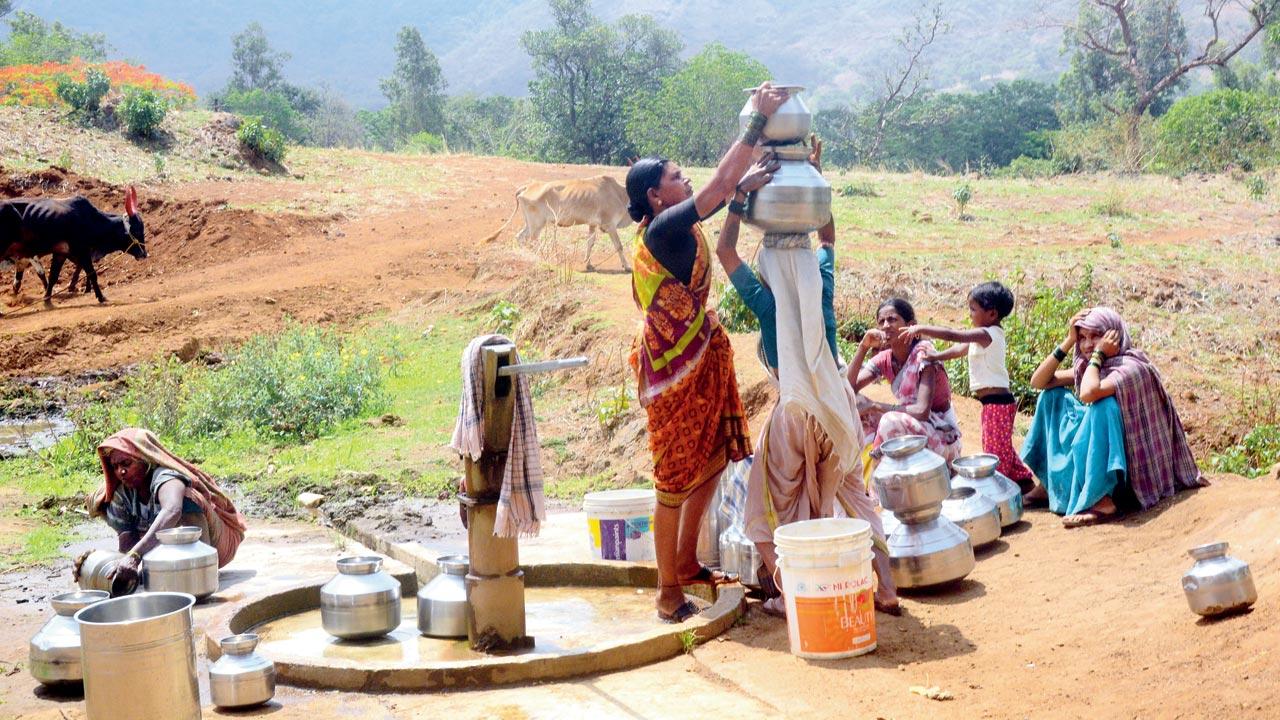 Women travel at least 2 km daily to fetch water from nearby hand pumps, according to a recent survey by writer-researcher Mayuri Dhumal, who spoke to 100 women in the region, between November 2022 and June 2023
Women travel at least 2 km daily to fetch water from nearby hand pumps, according to a recent survey by writer-researcher Mayuri Dhumal, who spoke to 100 women in the region, between November 2022 and June 2023
Nearly 46 per cent of girls bring two pots of water on their heads at a time. Most of them said that they have to make a trip to the village well or hand-pump three to four times a day. While 67 per cent of the women said that they carry water pots on their heads, 12 per cent said they carry pots on their waist. Twenty per cent girls said that they use vehicles like bicycles or carts to fetch water.
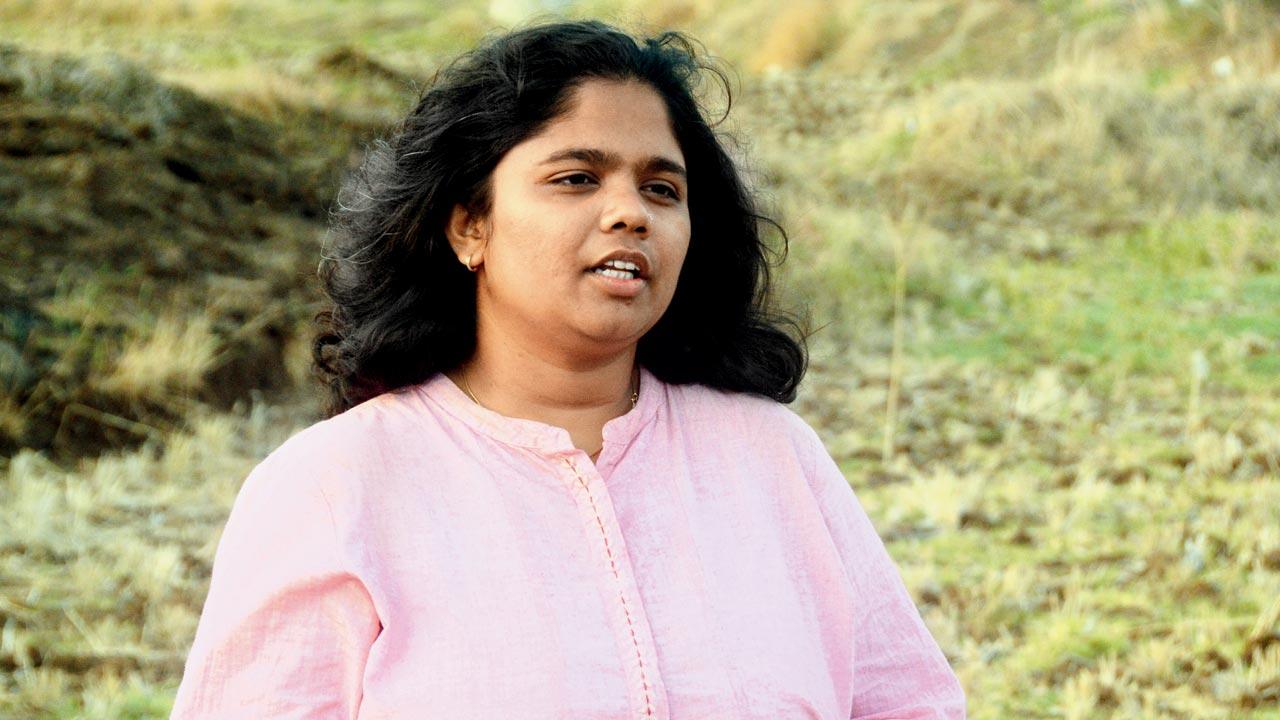 Mayuri Dhumal
Mayuri Dhumal
The impact of gathering water is enormous, and has had lasting repercussions on the women and girls of these villages—it has significantly reduced the time they get to spend with their families, study, or even engage in leisure activities.
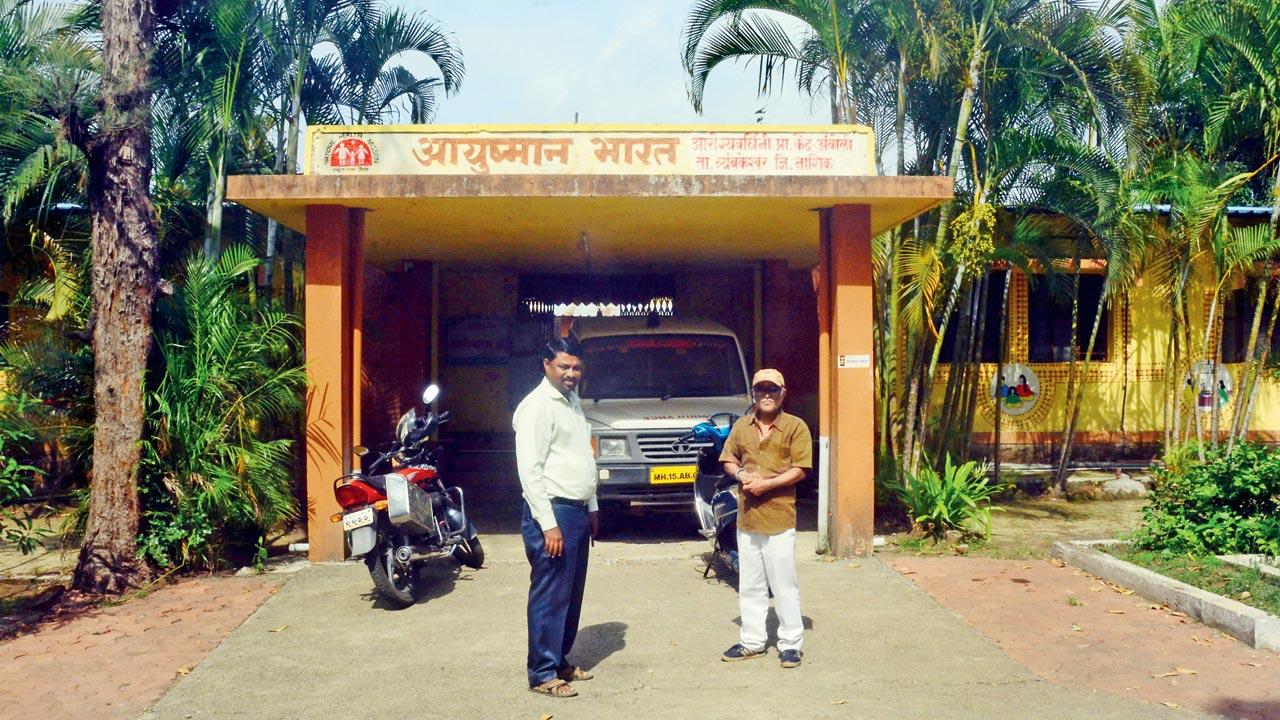 VB Mokal (left), an arogya sevak at Amboli Health Centre, said that during a recent health drive at some of the villages in Trimbakeshwar, they witnessed high incidence of body weakness among women
VB Mokal (left), an arogya sevak at Amboli Health Centre, said that during a recent health drive at some of the villages in Trimbakeshwar, they witnessed high incidence of body weakness among women
Kaveri Ambapure, 17, wants to become a doctor, but she hardly manages to go to school. A resident of Pahine, she says that her family sends her to collect water twice every day. “My school is in Trimbakeshwar, which is about 30 minutes from our village. Because of the water-filling duties, I often end up missing class, or just get too tired to go all the way to school,” she says, adding, “If we get piped water supply, things might get better for us.” Despite these roadblocks, Ambapure scored 74 per cent in her SSC exams.
Mayuri Dhumal’s survey has highlighted the indirect impact of water scarcity on girl’s education. “Twenty per cent of the girls said that their studies remain incomplete; 17 per cent said that they missed crucial school hours, and 14 per cent said they don’t reach school on time.” An alarming seven per cent of girls have dropped out of school.
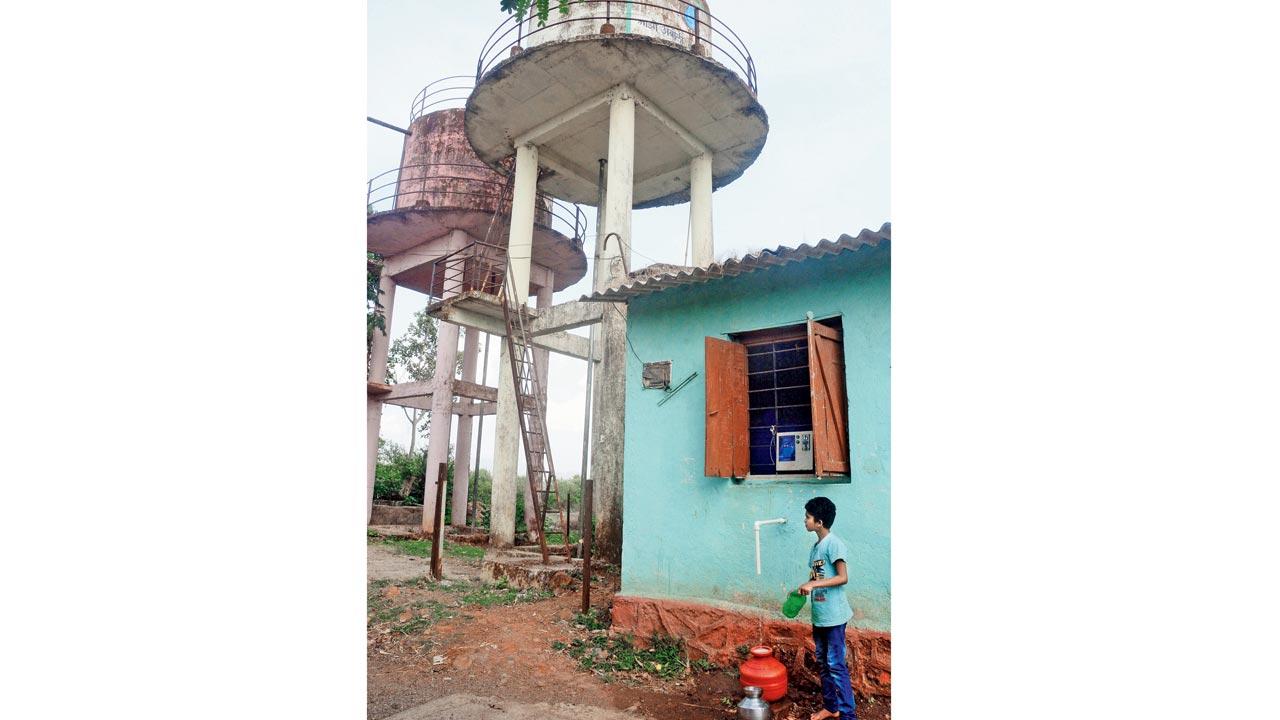 Some of the villages have water tanks that bring water from the wells to community taps, but these taps run dry in the summer months
Some of the villages have water tanks that bring water from the wells to community taps, but these taps run dry in the summer months
Chandrakala Korde, 27, is the sarpanch of Brahmanwade. Being the head of the village doesn’t mean she is spared from water-fetching duties. “Just last year, I collapsed on my way home, while bringing water,” Korde recounts. “I was put on bed rest for eight days and was administered saline.”
Like Korde, many women who were surveyed, complained of suffering from innumerable health issues. Headache, stomach ache, back pain and body pain were most common. Nearly half of the women said they went to fill water when they were menstruating. “And 81 per cent of women said that they fetched water even when they were sick,” shares Dhumal.
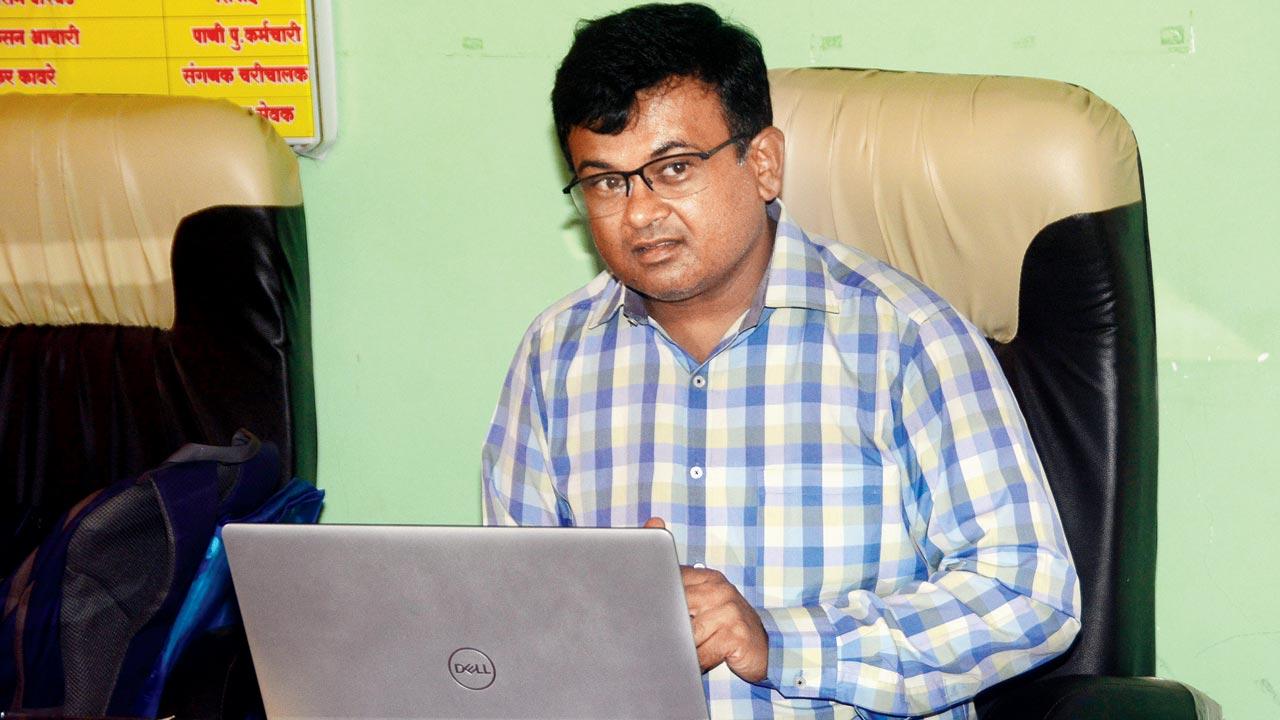 HB Pawar
HB Pawar
Speaking to mid-day, Asha worker from Brahmanwade, Vimal Ganpat Korde, says that women complaining of body pain often come to her for basic medication, as they don’t have a doctor in their village. “I usually give them paracetamol.”
VB Mokal, an arogya sevak (health worker) at Amboli Health Centre, told mid-day that during a recent health drive at some of the villages in Trimbakeshwar taluka, they witnessed high incidence of body weakness among women. “The physical labour of carrying heavy water pots has taken a toll on their health, but none of them want to come to the health centre and get themselves checked,” he says.
According to Korde, what’s most concerning is that “men never offer to help”. “Fetching water is a task they look down upon, despite the fact that they themselves use the water.”
Most of these villages are also battling water contamination. Mokal of Amboli health centre, says they keep getting cases of diarrhoea, gastroenteritis and other waterborne diseases, as water is often collected from unsafe sources.
As a regular practice, Mokal and his team label the village in colour codes, based on the level of contamination. “We check the wells every six months, regularly add TCL [total chlorine] and alum powder,” he says, adding that TCL and alum powders are also given to the villagers. “But they do not know how much quantity needs to be added. An excess of TCL and alum can cause diarrhoea and stomach ache.”
The failure of the Jal Jeevan Yojana in a way, is also a failure of the Swachh Bharat Mission, a country-wide campaign initiated to eliminate open defecation and improve solid waste management.
While many homes have toilets, most of these lie unused. “The water we collect only helps meet drinking and household requirements,” says Tulsabai Gare, Pahine village. “We wash clothes at the source, like near wells. Extra water for toilets is a luxury we cannot afford.” This is one of the reasons why villagers continue to defecate in the open.
According to Hari Korde, deputy head (up sarpanch) of Brahmanwade, under the Jal Jeevan Yojana, 14 villages were supposed to get water supply from Beze dam in Trimbakeshwar, through a pipeline. “However, work on this project has been going on for the last five years and we still don’t have a direct connection to the houses,” he says, asking, “Is it so difficult to build tanks and give water pipelines to a village?”
Back in 2007, long before the Jal Jeevan Yojana even came into being, stakeholders in these villages were attempting to implement the Jal Swarajya Yojana, which included developing strategies, approaches, campaigns and methods that enable individuals, families, groups, organisation and community to play an active role in achieving sustainable development. “Water from the wells was directed to village tanks and supplied to households through pipelines with the help of motors,” remembers HB Pawar, gram sevak at the Pahine Gram Panchayat.
“A worker was hired at a monthly wage of Rs 3,000 to maintain these tanks. We levied a tax of R1,200 annually, but many of the men backed out. While they can spend money on alcohol and tobacco, they won’t shell out money to make the lives of their wives and daughters any easier. This scheme flopped.”
When contacted, HL Khatale, block development officer of Trimbakeshwar said that most of the villages have their own tanks, for which water is sourced from the wells. “When the wells dry up, we assign water tankers. We are trying everything at our level to reduce the burden of these women.”
Ashima Mittal, CEO of Nashik Zilla Parishad said they are working in phases to make the Jal Jeevan Yojana available to all. “In some of the villages, this is proving to be a challenge, because of their remote location.”
22,000 kg
Avg. weight of water women carry every year
Water report card
Pahine village
Population: 658 men; 637 women
Number of wells: 2
For drinking purpose: 1
Hand pump: 3
For drinking water: 1
Dhumodi village
Population: 491 men; 444 women
Number of wells: 3
For drinking purpose: 2
Hand pump: 1
For drinking purpose: Unfit
Brahmanwade village
Population: 1,268 men; 1,185 women
Number of wells: 2
For drinking purpose: 1
Hand pump: 3
For drinking purpose: 1
 Subscribe today by clicking the link and stay updated with the latest news!" Click here!
Subscribe today by clicking the link and stay updated with the latest news!" Click here!







